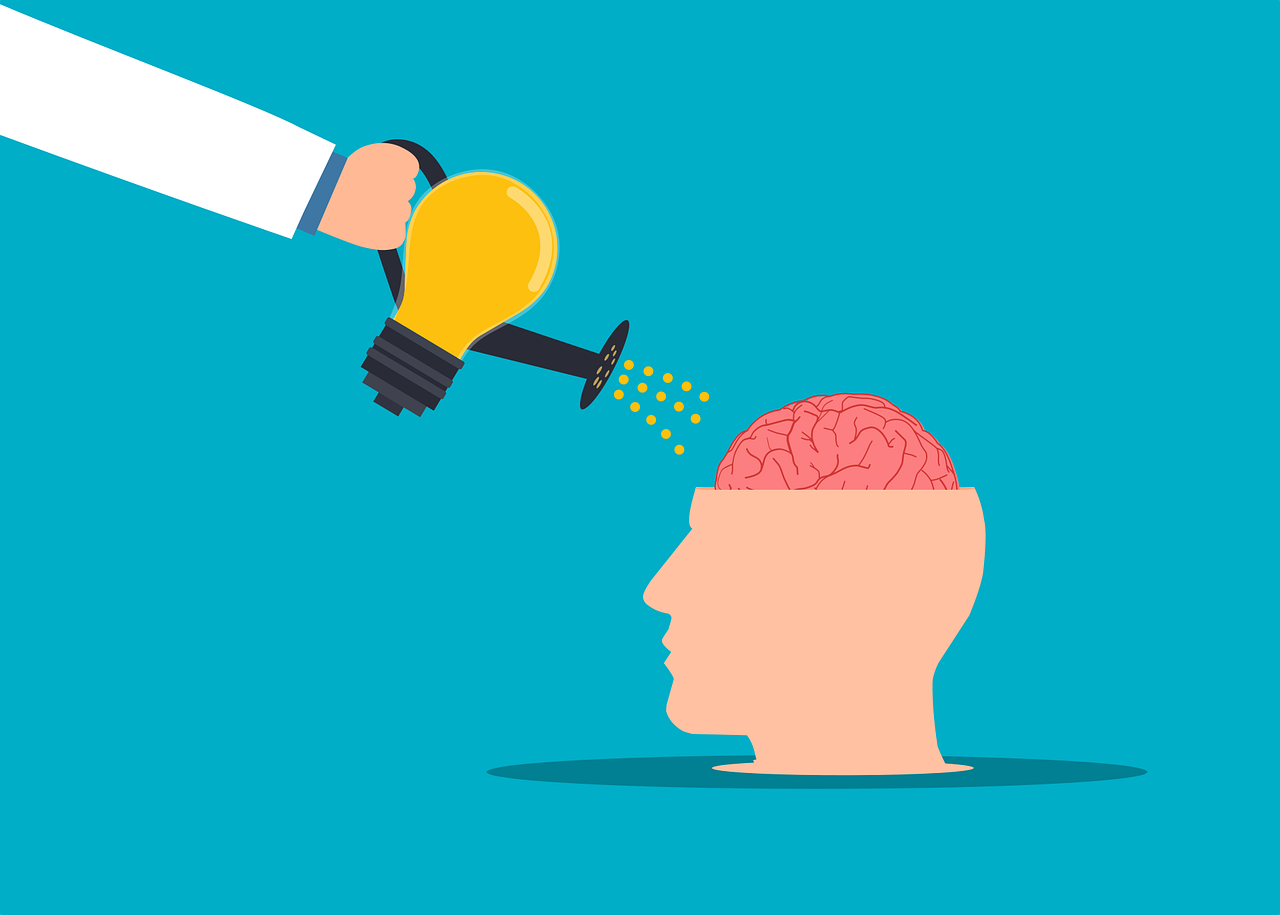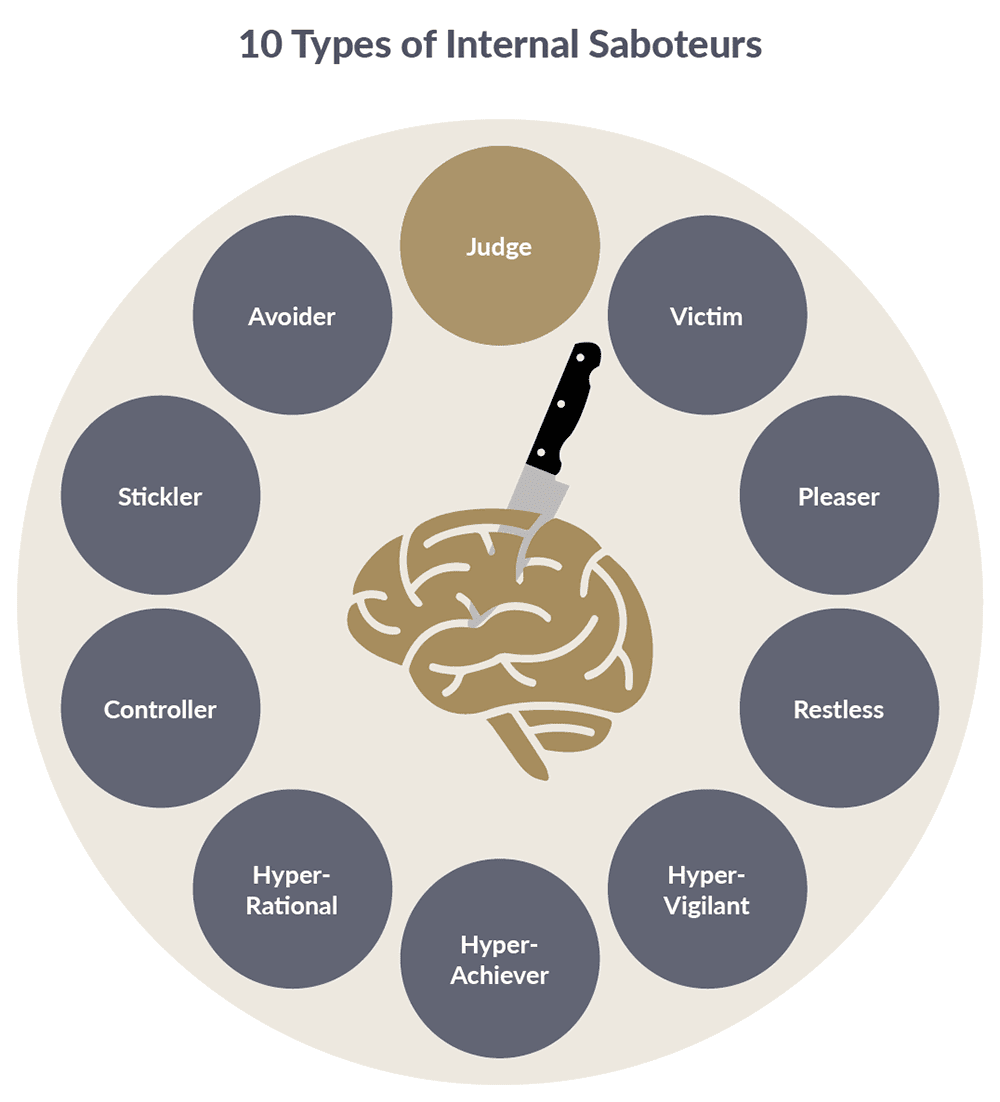
Positive Intelligence: How to Overcome Saboteurs
17 Nov 2021 by Saima Latif, Ph.D.
Scientifically reviewed by Tiffany Sauber Millacci, Ph.D.
Positive intelligence has become a popular term in the executive coaching world.
It is the new ‘intelligence’ of this decade, just as emotional intelligence was in the last decade and cognitive intelligence was in the decade before that.
Positive intelligence indicates how your mind acts in your best interest, and the good news is that it is a skill you can build.
In this article, you will learn about the positive intelligence quotient, its application to coaching, saboteurs, and how to stay positive as a coach. We also share great exercises and books toward the end of this article and hope you will feel very inspired to use this material in your sessions.
Before you continue, we thought you might like to download our three Emotional Intelligence Exercises for free. These science-based exercises will not only enhance your ability to understand and work with your emotions, but also give you the tools to foster the positive intelligence of your clients, students, or employees.
This Article Contains
- What Is the Positive Intelligence Quotient?
- 10 Types of Internal Saboteurs
- Positive Intelligence Coaching Explained
- Measuring PQ: 3 Assessments & Tests
- 3 Helpful Exercises for Coaches
- 3 Books About Saboteurs & PQ
- PositivePsychology.com’s Resources
- A Take-Home Message
- References
What Is the Positive Intelligence Quotient?
The positive intelligence quotient (PQ) is used as a measure of mental fitness. It is the percentage of time the mind is being positive, allowing it to flourish — a big factor in allowing you to reach your full potential.
PQ measures the strength of an individual’s positive mental muscles (sometimes called their “sage”) versus their negative ( the “saboteur”). The self-command muscle is the ability an individual has to boost their sage and dampen down their saboteur (Chamine, 2012). You will learn more about how to boost this muscle with exercises later on in this article.
Think of physical fitness in terms of enduring physical activity, with little effort or negative impact involved. If you are not physically fit, you will experience physical stress with minimal physical activity.
The analogy can also be applied for mental fitness. If you are not mentally fit, you may experience mental stress. This can come in the form of depression, anxiety, frustration, and anger (Chamine, 2012). It will inevitably impact education, work, family, relationships, social interactions, and recreation.
Chamine (2012) describes saboteurs as being habitual mind patterns, reacting to challenges and generating negative emotions. You flounder rather than flourish. You may experience stress, disappointment, regret, anger, guilt, shame, and worry. The antagonist to the saboteurs is the sage.
This aspect of your mental fitness manages challenges through positive emotions. These may be empathy, gratitude, creativity, curiosity, self-confidence, clarity, and action.
Is positive intelligence science-based?
Shirzad Chamine (2012) is best known for his development of the theory of positive intelligence. He argues that positive intelligence is based on research from performance science, neuroscience, and cognitive and positive psychology. He describes the research as independently validating positive intelligence.
Chamine and Katayama (2012) state that there are different parts of the brain that control the saboteurs and the sage. The survival part of the brain controls physical and emotional functioning and influences the saboteurs, while the sage is controlled by the PQ brain and consists of the middle prefrontal cortex, the right brain, and the empathy circuit. The PQ brain releases endorphins that counteract the stress-related saboteur hormones.
In an analysis of over 200 different scientific studies, the overall conclusion was that higher levels of PQ lead to greater success in work, marriage, health, friendships, and social and creative domains (Chamine, 2012).
Chamine examined research by Gottman and Silver (2015), who have produced many positive observations around marriage. Also, Fredrickson and Losada (2005) found that university students who made more positive than negative statements had improved mental health.10 Types of Internal Saboteurs
Chamine (2012) states that both saboteurs and sages reside in different parts of the brain.
The good news is that saboteurs are not static or fixed for life. They can be changed and weakened, boosting the sage. Exercises described later on in this article can make this happen.
Not everyone is affected by all 10 of the saboteurs at the same time and in the same way. Different people are affected by different types of saboteurs. The judge is the universal master for all people and a common saboteur that afflicts all individuals.
There are 10 internal saboteurs:
1. Judge
Often described as the universal saboteur, the judge will beat you up over repeated mistakes. It obsessively warns you about future risks. It causes you to worry and become easily obsessed and fixated on negativity. The judge is an enemy. It can go on to trigger other saboteurs and cause unnecessary stress, ultimately reducing your overall effectiveness.
2. Victim
The victim does not feel accepted. It tries to attract affection through attention. It focuses on painful, internal feelings and when criticized, it tends to withdraw. The victim receives attention through its emotional problems, poor temperament, or sullen behavior. The victim feels alone, isolated, sad, and abandoned. It feels frustrated, helpless, and guilty.
3. Pleaser
The pleaser tries to gain acceptance and affection by helping others. This meets its emotional needs. It pleases, flatters, and rescues. The pleaser loses sight of its own needs and can become resentful.
It has a strong need to be liked by others, which it does so indirectly so that others feel obliged to reciprocate care. The pleaser is bothered when others do not care what it has done.
4. Restless
The restless saboteur looks for excitement from many activities. It is easily distracted and bounces back from unpleasant feelings and seeks new stimulation.
Attention is constantly shifted and impatience is constant. It avoids a real and lasting focus on any issues or relationships. Restless saboteurs provide a substitute for self-nurture and an escape from anxiety and pain.
5. Hyper-vigilant
The hyper-vigilant saboteur shows continuous fear and anxiety about danger. It worries about things that may go wrong. It is self-doubting about itself and others all the time.
The hyper-vigilant saboteur is always suspicious of what others may be up to. It seeks reassurance and guidance through rules, procedures, and authorities. The hyper-vigilant saboteur often feels skeptical and cynical. It perceives that life is full of danger.

6. Hyper-achiever
The hyper-achiever seeks self-respect and validation from constant performance. This can lead to a goal-oriented and workaholic streak and losing touch with relationships and emotional needs. It adapts its personality to impress other people. It wants to perfect the outer rather than the inner self.
The overall need is to feel successful, as this creates a feeling of worthiness. Happiness is achieved through achievements. It is unable to connect on a deeper level with others.
7. Hyper-rational
This saboteur focuses on processing everything rationally. High concentration can cause a loss of focus. Insight, knowledge, and understanding is valued most. It analyzes rather than experiences feelings.
The hyper-rational saboteur has a good survival strategy. It escapes into an orderly, rational mind, generating security and intellectual superiority. Attention and praise are gained from being the most clever person.
8. Controller
This saboteur has an anxiety-based urge to take charge. It wants to be in control of situations and people’s actions. It is a strong talker, willful and confrontational. The controller pushes others beyond their comfort zone. The controller can be stimulating and intimidating.
Communication can be expressed in an angry and critical way. When it feels hurt or rejected, it will not admit to this. The controller gets results, but these are temporary and at the cost of others feeling controlled and resentful.
9. Stickler
The stickler is a perfectionist and has a need to keep things in order and organized. It can be highly critical of itself and others. The stickler strongly requires self-control. It has high standards and needs to be methodical.
There is constant frustration with itself and others. The stickler is sarcastic and self-righteous. There is inflexibility to deal with change and the different styles of others. Other people are left feeling resentful, anxious, and full of self-doubt.
10. Avoider
The avoider focuses on the pleasant and positive and avoids the difficult and unpleasant. It has difficulty saying no, resists others, prefers comfort and routine, and procrastinates when tasks are not pleasant.
The avoider will suppress anger and resentment, rather than express these emotions. It denies conflict and negative relationships, and trust from others can be superficial as there is conflict-avoidance and others’ trust levels are reduced.